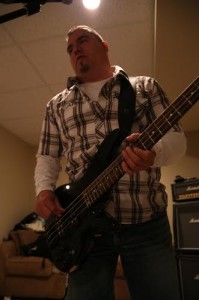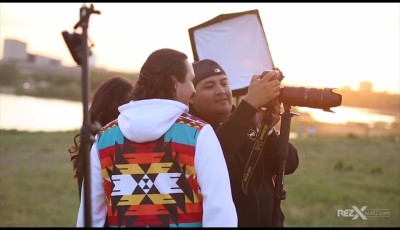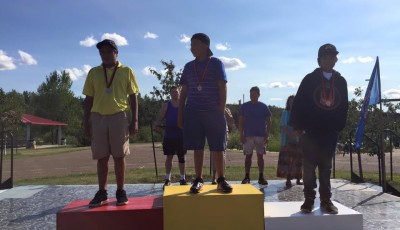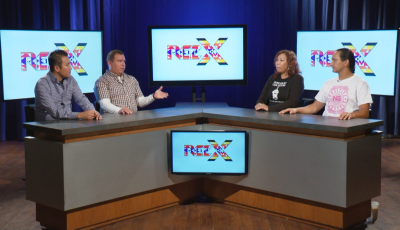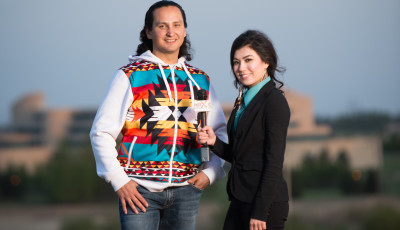Strip My Mind: Truth, Reconciliation, and Remembrance (Bird’s Eye View blog)
Strip My Mind: Truth, Reconciliation, and Remembrance
Earlier this month, The Truth and Reconciliation Commission (TRC) took place in Edmonton. The over 300 community visits document the stories of the Indigenous experience in residential schools across Canada.
How much information was collected? As Darryl Dyck from the Canadian Press says ‘it would take more than two years to play back the more than 6,500 statements – they range in length from 10 minutes to five hours…”.
That’s a lot of testimony and it’s testimony I take personal since both of my parents and my grandparents were in the residential school system (none alive to tell their story). In fact, my whole community (urban/reserve) had family members attend these schools. Ours is a history tainted by what happened behind those walls, under religious guidance, under the driving force of Canadian politics.
But what happened there?
We know from testimony all kinds of abuse occurred: mental, emotional, physical, and sexual. Culture was stripped from these kids in a brutal, prison-like manner. Parents were intentionally kept isolated from school decisions. Kids were tortured and used as medical/health tests (in at least 6 schools). Many kids were intentionally uncared for and placed in situations leading to infections (tuberculosis). Over 4000 deaths have been confirmed from one Province’s records (BC); 11 more still to report on.
That actually sounds like a holocaust. One of Miriam-Webster’s definitions for holocaust is “a mass slaughter of people”; in our case, ‘a mass slaughter of children’.
The truth is we don’t know how many kids died going to school but if BC’s numbers are used as a forecast well 150,000 kids attended residential schools and it is possible over 20,000 kids could have died there. Now imagine having those kinds of numbers in a non-Indigenous public school system (for a period of some 70 years)? Would parents send their kids there over and over and over?
And this is where the rubber meets the road:
“Sadly, this event was not about reconciliation because only one side took it seriously. The stories by the survivors of their pain and suffering were a valuable cathartic experience, but only one side participated.” (Doug Cuthand, Star Phoenix, http://www.thestarphoenix.com/touch/story.html?id=9699343)
Right, only one side was ‘all in’ for the process of reconciliation, why is that?
“’Settler’ is a political and relational term describing our contemporary relationship to colonialism. It is not a racial signifier. Rather, it is a non-homogenous, spatial term signifying the fact that colonial settlement has never ceased. Colonial settlement is ongoing…” (Corey Snelgrove and Klara Woldenga, http://www.martlet.ca/opinions/why-the-term-settler-needs-to-stick/#.Uz0HqnXRPbc.twitter)
Only one side cares about this because only one side feels the lingering effects of losing so much for so long in what were called ‘schools’. But really this was all about ‘killing the Indian in the child’, metaphorically and literally.
The Canadian settlers have been lied to, not all their fault, in fact they have been led to believe not much happened there. Now if I never heard about Auschwitz I would have a tough time believing the narrative about what happened (as recorded by Jewish faithful). What would make it tougher is if I was German and my parents and grand-parents played roles in the propping up of that nation; I would want to live in some level of denial I think.
And that’s where we are in Canada, denial.
History? Media? Identity? Commemoration? Where are these things when we deal with the expansive Indigenous experience of residential schools? Nothing exists. The schools and Indigenous experience are all but written out of history. That needs to change and that needs to change now.
What did the Jewish nation do about the holocaust? They could not go back and change the horror of the event but what could they do? They could memorialize it.
Israel has a national day of memorial for the Shoah – the holocaust. On that day, when the horn sounds, everyone stops what they are doing (even traffic stops); they stand and remember the fallen. They remember that it could have been them and those lineages erased from the planet.
They also have built museums from the old camps – so people can see for themselves. They also have museums to educate about the events that led up to the Shoah. The taglines ‘never again’ and ‘never forget’ come to mind.
Israel did not forget about what happened, they reconciled with it, but they made damn sure the world faced up to it as well since it happened on their watch, under their power, while they were silent – and Israel (not a nation at the time) – was powerless to stop the unfolding events.
If any of the above sounds familiar, well similar events happened with residential schools in the Indigenous experience. Canada sat silently by as 150,000 children faced down evil without the assistance of parents (who were held out of the school system). This is why they are called ‘survivors’ – they survived the onslaught of government led church repression for decades.
The residential school experience needs 2 things for true Canadian reconciliation:
1. Museums: for the education of Canada on what happened and why it happened
2. Commemoration: day to honor the lost lineages and the experience of the survivors
Anything less and we continue a history of denial.
Here’s a song I remember those times by, those kids, and their experience.
Chili Peppers ‘Strip My Mind’:
By Jay Bird, Bird’s Eye View


